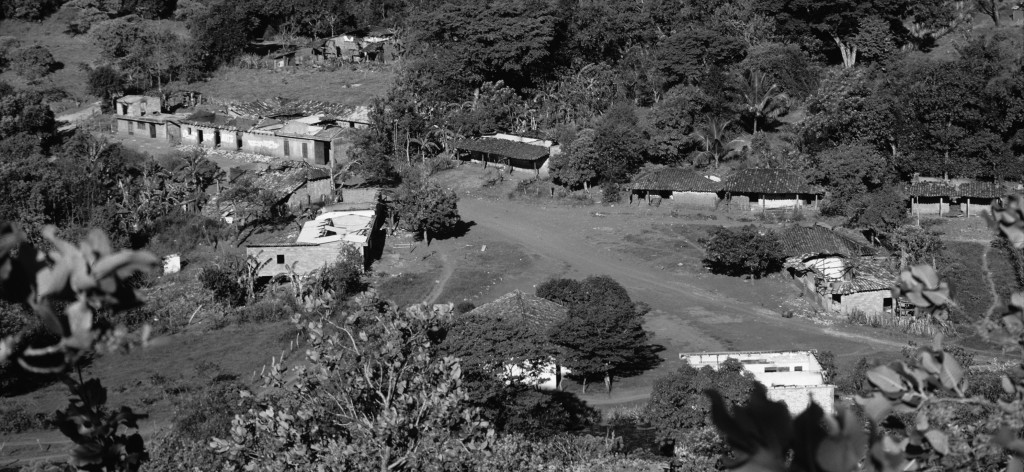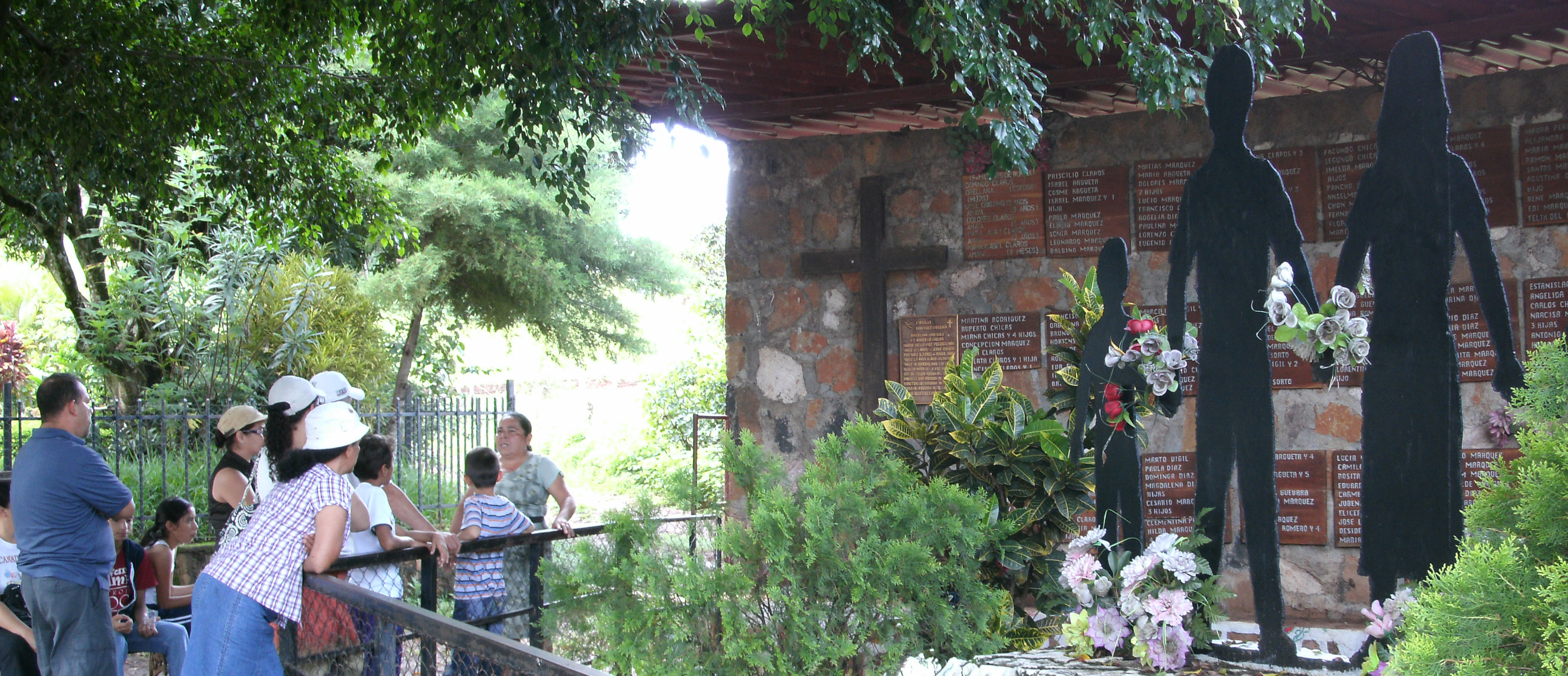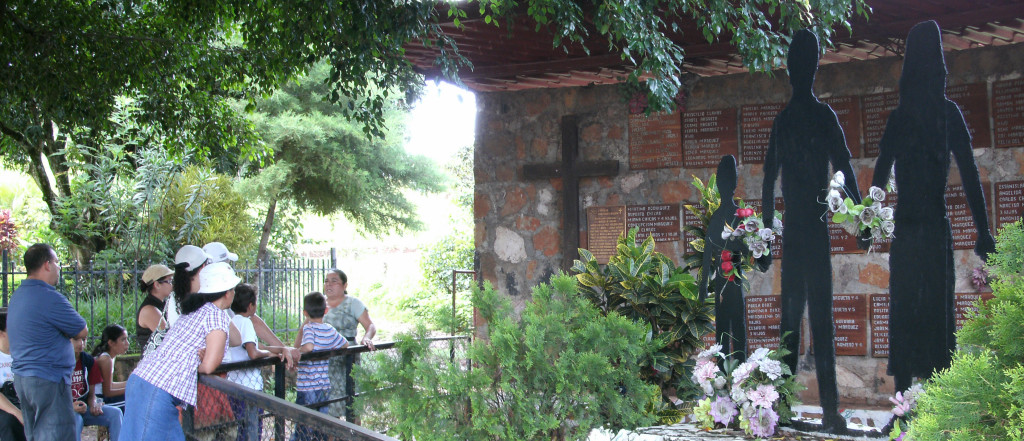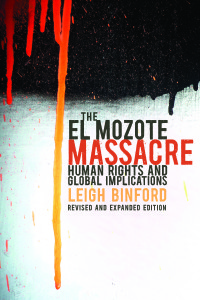by Leigh Binford, Professor of Sociology and Anthropology at the College of Staten Island and the Graduate Center, CUNY
To coincide with publication of a revised and expanded edition of his “The El Mozote Massacre: Human Rights and Global Implications“, Leigh Binford challenges conventional wisdom on the most notorious event of the civil war that ravaged El Salvador throughout and beyond the 1980s.
Between 11 and 13 December 1981, the Salvadoran Altlacatl Battalion massacred more than a thousand men, women and children in and around the hamlet of El Mozote, located in the northeastern department (similar to a state or province) of Morazán, El Salvador. It was the second year of a brutal civil war between the government and rebel FMLN (Farabundo Martí National Liberation Front) forces that would not end until 1992. The war resulted in at least 75,000 dead and 7,000 disappeared, 95 percent at the hands of the government military (85 percent) or paramilitary and death squads linked to them (10%) according to a 1993 United Nations Truth Commission. Government forces committed dozens of massacres, but the El Mozote is the one that most people recall, perhaps because journalists visited the site several weeks after the events and published articles in major U.S. newspapers that forced the newly-installed Reagan administration to undertake a cursory investigation.

El Mozote shortly after the massacre (from Museo de la Palabra y la Imagen, San Salvador)
Following the administration’s denial that a massacre had occurred, El Mozote dropped off the media radar until the Truth Commission report and the subsequent appearance of a lengthy article and then book by journalist Mark Danner. Danner provides an excellent description and analysis of the embassy’s (non)investigation, but apparently he spent little time in northern Morazán, was unfamiliar with the area’s pre-war history, and as a result erred in his representation of the population and its response to the army invasion. Three claims about El Mozote and the massacre have become part of common sense: (1) that all or almost all of the population died; (2) that the town avoided political violence before the Atlacatl invaded in December of 1981; and (3) that the political neutrality of the inhabitants could be attributed to their embrace of evangelical Christianity.
Many people in northern Morazán would agree with the second and especially the third of these formulations, but not one of the three is supported by evidence. Many people had left El Mozote and the surrounding hamlets before the massacre for regional cities or workplaces in the mountains or coffee and cotton agro-export zones to the north and west. Based on the collection of 14 genealogies in the early 1990s, I estimate that about a third of the pre-war population was killed in the massacre. However, the losses differed greatly among different extended family units. Three of the 14 families lost less than 10 percent of their members, and three others lost more than 60 percent. Thus while all survivors have been deeply affected by the deaths and everyone lost relatives of some degree in this highly endogamous area, some households lost more members than others. Moreover, many people who remained in the area and were caught in the army’s pincer operation left home just ahead of the Atlacatl’s arrival and hid nearby, where they heard the sounds of and in some cases observed the slaughter of friends and relatives. Fear kept most of them silent for decades, until the organization of a local human rights organization during the first decade of the new millennium. Eventually dozens of people testified to what they had seen and heard during the Atlacatl incursion, contributing to the extensive archive of information presented to judges in Guayaquil, Ecuador, when the case was argued before the Inter-American Court of Human Rights in April of 2012.
Second, El Mozote was certainly less conflictive than many other communities in northern Morazán, but it was far from the placid island in a sea of armed confrontation that Danner maintains in his 1994 book, The Massacre at El Mozote. Based on ten field trips to northern Morazán between 1991 and 2012, as well as an exhaustive study of the available documentation, I conclude that there occurred a minimum of twenty politically-motivated murders and assassinations in and around El Mozote between January 1980 and early December 1981. The majority took place not in El Mozote proper but in nearby hamlets and rural areas. This dispersal of violence complicated people’s efforts to make sense of the repression. It is important that we keep in mind that the Atlacatl operation embraced a zone encompassing as much a hundred square kilometers and at least six rural hamlets.
Third, many people erroneously attribute the political attitudes of the population in and around El Mozote to widespread adoption of evangelical Protestantism. Even former FMLN guerrillas make this argument, which simplistically links pre-war Catholicism with support for the rebels and Protestantism with support for the government. However, the correlation of evangelical Protestantism and political conservatism is far from one-to-one. The larger problem with this formulation is the lack of evidence for a substantial pre-war evangelical presence in northern Morazán. While some materials indicate that small evangelical groups had organized in areas around El Mozote, the hamlet itself was staunchly Catholic. Indeed, it was one of the only hamlets in northern Morazán to contain a free-standing Catholic church, which was constructed by the inhabitants in the late 1950s with local labor and donated funds. However, the church contained no resident priest, and José Carmen Romero, the local lay catechist, remained faithful to Fr. Andrés Argueta, the conservative priest who presided over the parish of Jocoaitique in which El Mozote was located. Catholics, too, could be politically conservative, and in fact most of them were. A radical priest was appointed to head up a new parish created in 1972, but before the war he never visited El Mozote, which was ensconced in the heart of Argueta’s territory. Christian Base Communities did not develop in or around El Mozote, and without the local organization associated with them and the progressive message of God’s preferential option for the poor they disseminated, Catholicism in El Mozote remained wedded to a conservative theology that promised those enduring poverty on earth rewards in the afterlife.
Finally, it is important to mention that the hamlet of El Mozote was inhabited by a number of merchants and tradespeople whose energy, intelligence and organizational capability had resulted in a level of local development that must have been the envy of rural hamlets throughout northern Morazán. The hamlet contained a church, brick schoolhouse, cemetery and was home to an agricultural cooperative. On the eve of the civil war El Mozote had even been selected as the site for the construction of a technical school, to be financed by the Venezuelan government, that would train peasants in agriculture, carpentry, bricklaying and other skills. Although land shortage and landlessness were growing problems in the area, it seems likely that the material benefits that many people received by working within the system and Argueta’s conservative Catholic message worked together to inoculate them against FMLN calls to overthrow the government.
Until recently the people in and around El Mozote have been one of the “people without history” discussed by anthropologist Eric Wolf. Of course the people in El Mozote always had a history, but for much of the world that history only began (and ended) when the Atlacatl carried out its scorched earth operation. With little understanding or apparent interest in social and economic relations in the area before and on the eve of the civil war, journalist Mark Danner and many other commentators were quick to center their analyses around bits of information that reinforced pre-existing beliefs about poor, rural people. But the reality of the massacre and those who lived it was much more complex, as I argue here and in a great deal more detail in The El Mozote Massacre: Human Rights and Global Implications (University of Arizona Press).




Recent Comments